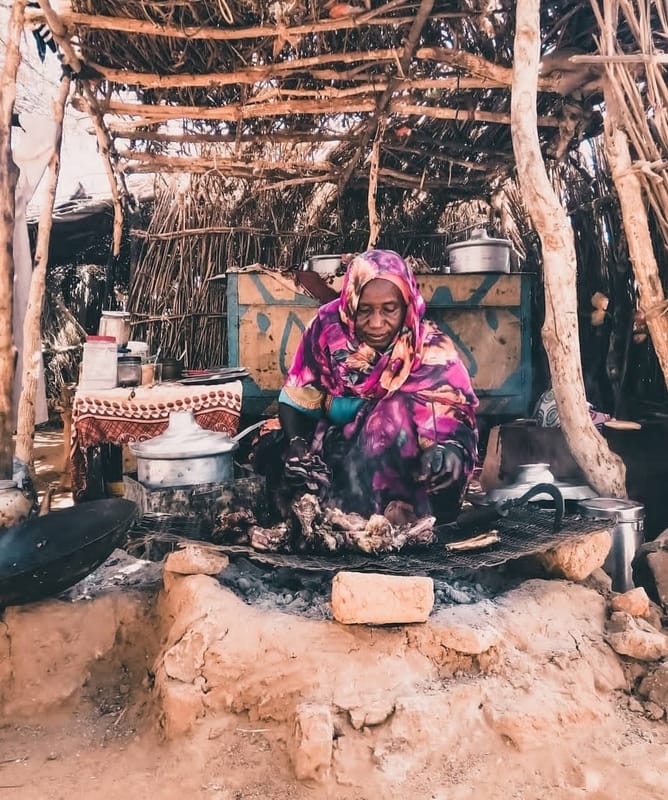COVID-19 and the Sudanese Economy: A Wake-Up Call or Final Nail in the Coffin?

Since its outbreak in Wuhan, China in December 2019, coronavirus (COVID-19) has been taking a gigantic toll on the global economy. It can be described as a trigger to a domino effect of a future economic apocalypse – an inevitable outcome to China’s lion share of global trade, production and consumption. Several countries have imposed nationwide quarantines. According to The Guardian, at least 87 countries have conducted entry restrictions. Stock exchange, tourism, aviation, sports and more sections are facing major contraction, forcing the world to brace itself for a sweeping disruption.
With more than 190,000 confirmed cases globally, the United Nations Conference on Trade and Development forecasts a 2% global economic growth slowdown. Concurrently, the United Nations Economic Commission for Africa (UNECA) forecasts a drop of the continent’s growth from the initial forecast of 3.2% to 1.8% – a percentage that is disproportionate to the current number of cases, but can be explained by the continents forward and backword trading linkages.
For Sudan, the IMF has already forecasted an overall economic stagnation in 2020. For instance, the GDP growth rate is expected to decrease by 1.5%, in addition to other deteriorating macroeconomic indicators. Hence, COVID-19 seems to be the last nail in the coffin.
Current situation and possible economic effects of COVID-19 in Sudan

Notwithstanding the strict measures by the Ministry of Health, and the Council of Defence and Security, the people of Sudan do not seem to be taking the disease as serious as they are asked to. With only one reported case of COVID-19 in Sudan, the country has not yet witnessed a shopping frenzy as seen around the world. Panic shopping has been limited to sanitisers, face masks and other hygiene supplies, mainly in the capital and urban centres, mostly inhabited by high and middle classes. A few families might have stocked up for self-isolation, but overall, the state of panic does not seem to go beyond social media and public transportation chats.
According to a recent study by Brookings Institution, assuming a scenario of a mild outbreak, or full containment, the significant economic impact in the short run is still bound to happen. The direct consequences are related to rates of mortality and morbidity (which is the rate of people unable to pursue their regular activity as a result of disease either by being sick themselves or by caring for sick people).
Some of the factors that may extravagate COVID-19 economic impact in Sudan is its weak health infrastructure and lacking the adequate funds to face the possible eruption. Although the country’s population is relatively young (41% under the age of 15 and 20% under the age of 25), and WHO confirmed that younger age groups are at lower risk, the economic threat that faces Sudanese households is the fact that many of them mainly depend on an older person for living (usually one of the parents or both), due to lack of satisfying employment opportunities for the youth. As a result, it would put the family’s breadwinners in jeopardy.
Public expenditure and revenues
On the revenue side, 27.4% of the national budget for 2020 is supported by grants from foreign countries and international institutions. For instance, Friends of Sudan, a group of countries and international organisations that previously agreed on supporting Sudan’s transition, promised a disbursement of funds after a conference in June 2019. Those friends include USA, UK, Germany, Norway, France and Egypt among others, who are currently fighting their own internal wars against COVID-19, consequently those promised funds may never arrive.
On the expenditure side, the health expenditure was assigned 2% of GDP (an amount equivalent to SDG51.4 bn), which of course did not account for a pandemic outbreak, and currently demands an urgent funds reallocation. So far, Sudan has taken serious measurements towards flattening the pandemic curve by locking its borders, shutting down all educational institutions and some government offices, and declaring a national state of emergency. Despite these efforts, the danger of an exponential growth is looming.
A recent study published by Professor Warwick McKibbin and PhD candidate Roshen Fernando[1] in March 2020 gives an overview of the expected changes when it comes to public expenditure. The ANU researchers forecast that in the case of a mild severity of COVID-19 in China, the rest of the world is expected to undergo a 1.45% shock in government expenditure.
This forecast puts the Sudanese Ministry of Finance and Economic Planning under the pressure of funding this shock through borrowing from the Central Bank, and automatically driving a spike in the overall price level of goods and services.
Jobs and employment

Image credit: © Noory Taha
The Sudanese labour market is dominated by its informal sector (accounting for 60% of total GDP according to UNDP). The workers of this sector, who lack any form of social security and depend on their daily incomes, are threatened with a major depression due to quarantine efforts – be it tea-sellers, hawkers at traffic lights and captains of ride-sharing apps. However, the agricultural sector, the biggest informal employer in the country, might be affected differently. As the sector spreads over various regions, the effect would depend on the level of awareness of the habitants of the quarantine and the depth of the virus spread in the coming weeks. Nonetheless, the sector would inevitably be affected by the overall condition of trade, consumption and industries.
When it comes to formal institutions, be it public or private, a global trend to activate working from home policies have been rolled out. Nevertheless, the Sudanese formal sector seems to be lacking the infrastructure to keep up with trend. From programmed power cuts, poor internet connectivity and inadequate platforms for e-government and electronic transactions, this option seems to be invalid.
McKibbin and Fernando forecast that the labour supply would fall by 2.67% due to mortality, and direct and indirect morbidity caused by care giving. Additionally, a plummet labour demand would persuade many employers and business owners to minimise not only hiring but also the existing workforce – an action that would severely affect traditionally vulnerable groups.
International trade

Image credit: © Khojaly
China has been the main trading partner for Sudan. For instance, in 2018, Sudan and China exchanged USD1.657 bn worth of Chinese imports and USD750.5 mn exports. While China’s cost of production rises with 0.50%, and its consumption demand plunges with 2.50%, the trade deficit between the two countries is likely to widen. The direct results of this includes a plunge in the value of the Sudanese Pound (SDG) and an increase in inflation levels.
Apart from the effects arising of the global aftermath of COVID-19, Sudan’s economy is in a very vulnerable position. It is possible that the country would not have to experience worse-case scenarios yet; however, this pandemic should be a wake-up call for prioritising the establishment of an adequate healthcare system and the shift towards governance institutions that are well-equipped to function under these circumstances.

Jawhara Kanu is an economist with a postgraduate degree in Economics and Finance for Development from the University of Bradford. In addition to writing, her interests include political economy, development and women empowerment. After completing her bachelor’s degree in economics and finance in 2015, she has been working in development projects implementation in Sudan.




